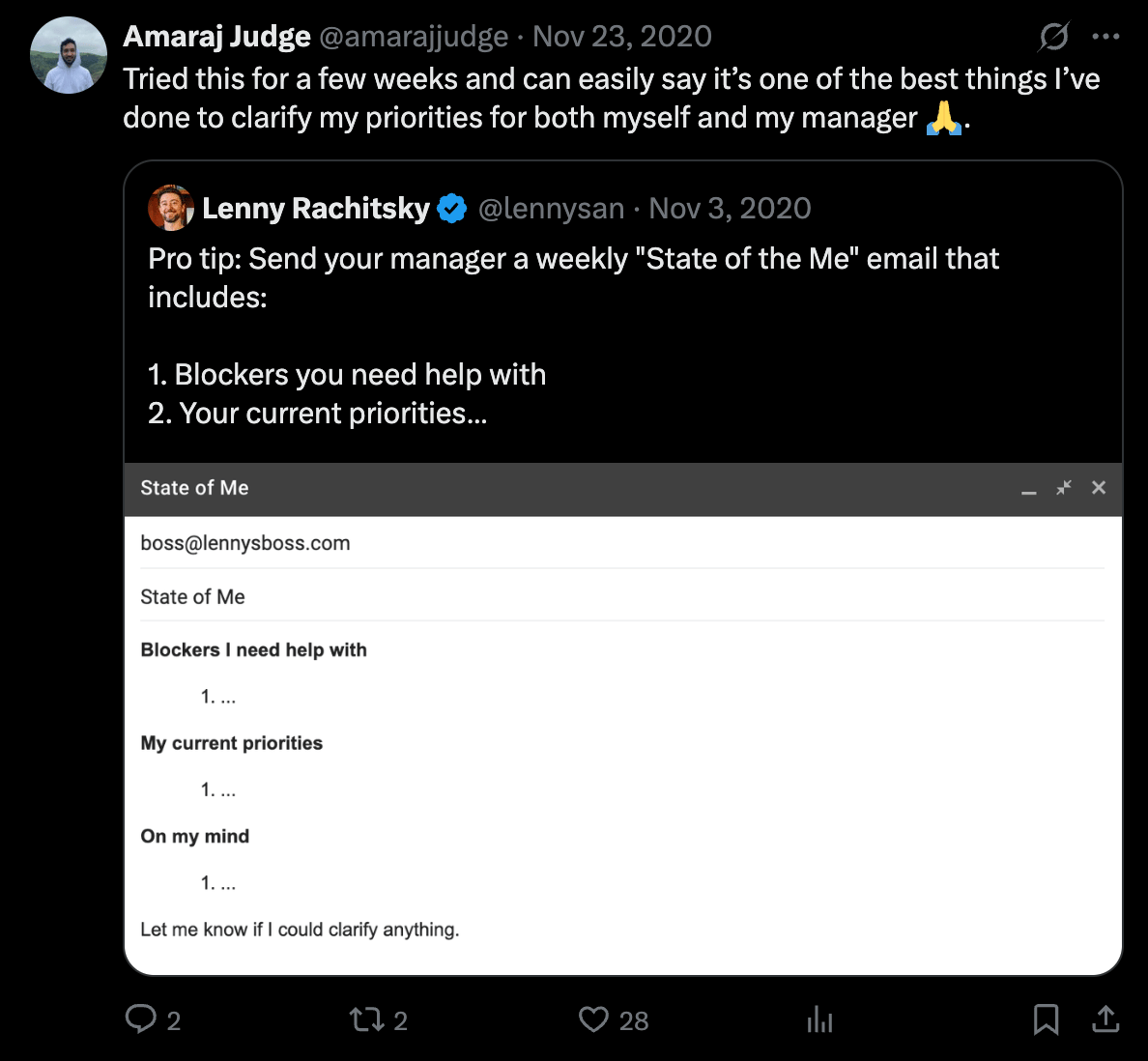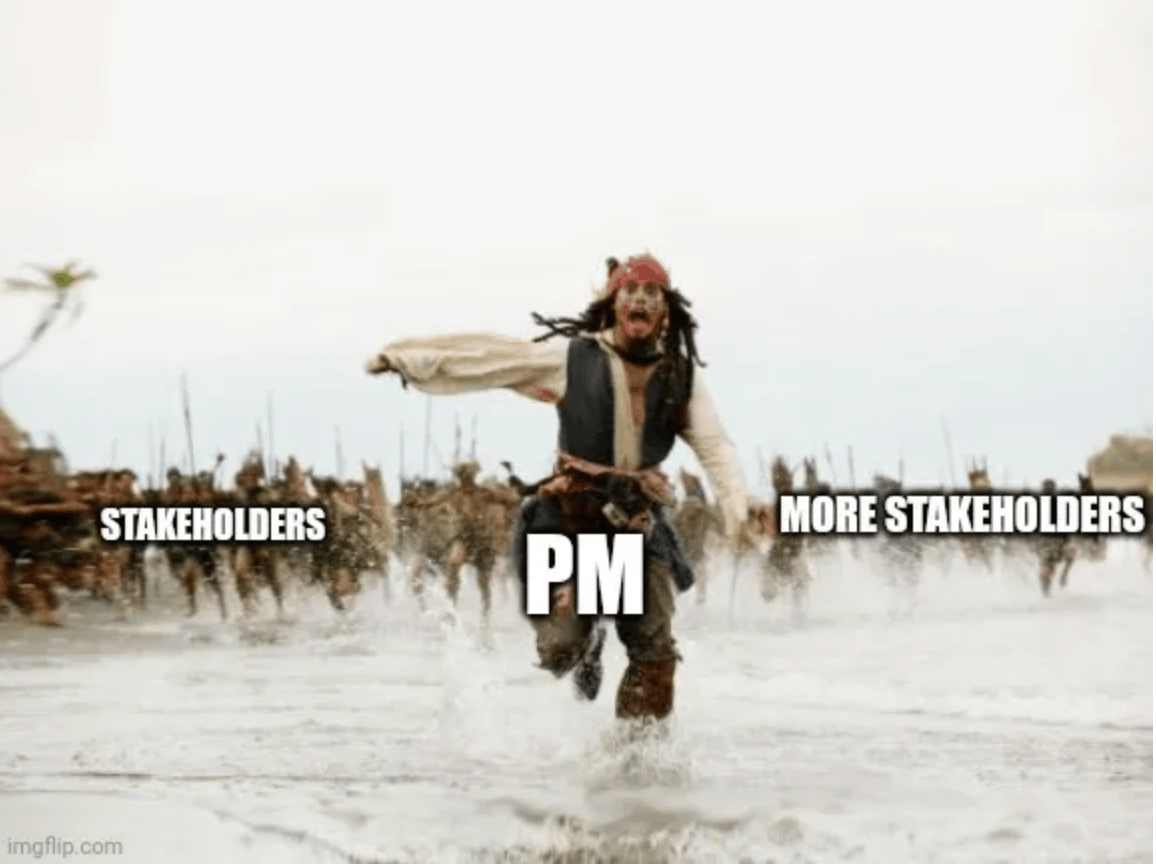- Out of Scope
- Posts
- 🚀 How to Become Your Manager's Favorite Direct Report
🚀 How to Become Your Manager's Favorite Direct Report
Most people wait for their manager to check in. Here's why that's backwards—and the framework that flips the script.
You've heard the phrase "Happy wife, happy life"—well, here's one for your career: "Happy boss, happier life."
Think Leslie Knope and Ron Swanson. Leslie doesn't wait around for direction—she manages up, making Ron's job easier and her own career unstoppable. While Leslie's handling all the details, Ron gets to do what he loves: woodworking in his office, avoiding human contact, and eating steak.
But what exactly is managing up? It means taking ownership of the working relationship and communication flow with your manager, rather than passively waiting for direction. You become the proactive one, setting the rhythm of your professional relationship.
Why Managing Up Matters
Managing up elevates your actual and perceived value in an organization. When you manage up effectively, you'll come across as more competent and trustworthy, and chances are your boss will like you better, too. You become the direct report who makes their job easier, not harder.
Most of us are reactive communicators. We wait for our manager to:
Schedule check-ins
Ask for status updates
Inquire about blockers
Here's the reality: Your work might be 100% of your focus, but it's only a fraction of theirs.
Your manager is juggling multiple direct reports, producing their own work, planning for next quarter, preparing for meetings, and shielding your team from organizational chaos. When you force them to actively manage your communication, you're adding to their cognitive load instead of reducing it.
The Monday Update
When COVID hit and everyone went remote, I needed a way to showcase my work and help my manager help me. I discovered a framework from a tweet by Lenny Rachitsky called the "State of Me" update and adapted it for my purposes. (I even tweeted at Lenny after using it successfully for weeks—and he reposted it!)

I obviously got receipts.
I developed what I call the Monday Update—a simple, structured email I'd send every Monday morning.
The results? My manager immediately understood what I was working on and what I needed help with. She even told me it was one of the most useful communications she received each week.
The Exact Format That Works
1. Key Priorities for the Week (3-4 items max): List your top priorities in order of importance with just enough context to be clear:
Finalize Parks Department budget for Harvest Festival (due Wednesday for city council review).
Launch the Pawnee Goddesses recruitment program (soft launch with existing troop leaders first).
Complete citizen complaint response system revamp (addressing the 40% increase in raccoon-related incidents).
2. Blockers: Flag anything that could derail your priorities:
Need legal review on Goddesses’ liability waivers (requested Friday, following up today).
Waiting on Jamm's approval for festival noise permits.
3. On My Mind: Share the strategic questions you're wrestling with or insights you're developing. This shows you're thinking beyond just completing tasks—you're considering the bigger picture and how your work connects to broader goals:
Should we expand the Harvest Festival to a weekend event next year? Initial attendance projections look strong.
Thinking through how to better integrate the Parks and Rec departments—noticed some overlap in our programming.
Ron mentioned budget constraints—wondering if we should prioritize high-impact, low-cost initiatives for Q4.
The key is showing you're not just executing, you're strategizing and looking ahead.
Why This Framework Works
The Monday Update focuses on the punchline. Your manager can scan and understand what matters most in 30 seconds. It builds trust proactively by demonstrating that you can say what you'll do, do it, and report back—the foundation of any strong working relationship. Most importantly, it flags problems early when they're manageable, not when they've become full-blown crises.
Implementation Tips
Subject Line: Use something consistent like "Monday Update - [Your Name]" or "Weekly Update - [Date]." Your manager should immediately know what it is.
Timing: Send it the same day and time each week. I always sent mine Monday morning, so my manager knew when to expect it.
Length: Keep it under 5 bullet points total across all sections. If you can't fit your priorities in 5 bullets, you're probably not prioritizing effectively.
Context: Include just enough background so your manager doesn't have to ask follow-up questions, but not so much that it becomes overwhelming. Think "elevator pitch" level of detail.
Follow-through: Always include updates on what you said you'd do last week. This builds credibility over time and shows you're reliable. Don't forget last week's commitments—if you said you'd finish something by Wednesday and didn't, address it in this week's update.
Consistency: Send it regularly or don't send it at all. Sending it sporadically defeats the purpose.
Your 4-Week Challenge
If you're not already doing something like this, try the Monday Update for the next four weeks. You might be surprised by how much it changes your relationship with your manager and how much it clarifies your thinking about your work.
Sometimes the best way to manage up is to create a simple system that makes it easy for everyone to win.
Want more career frameworks like this? Reply and let me know what workplace challenges you're facing.
And please share Out of Scope with a friend or coworker if you’re enjoying it so far!
The Meme

There’s no getting away.